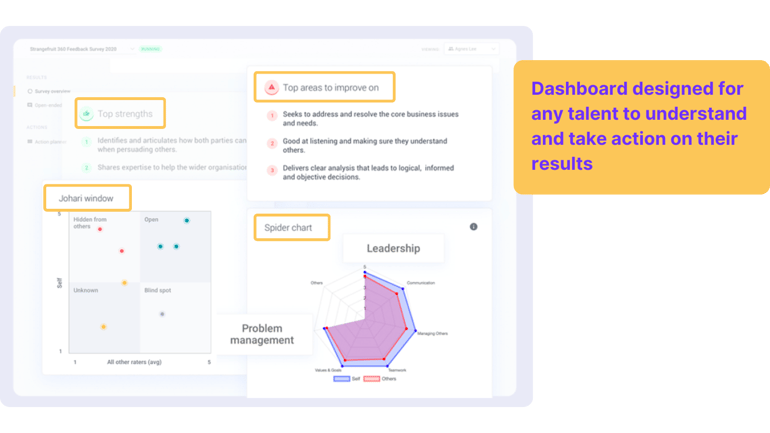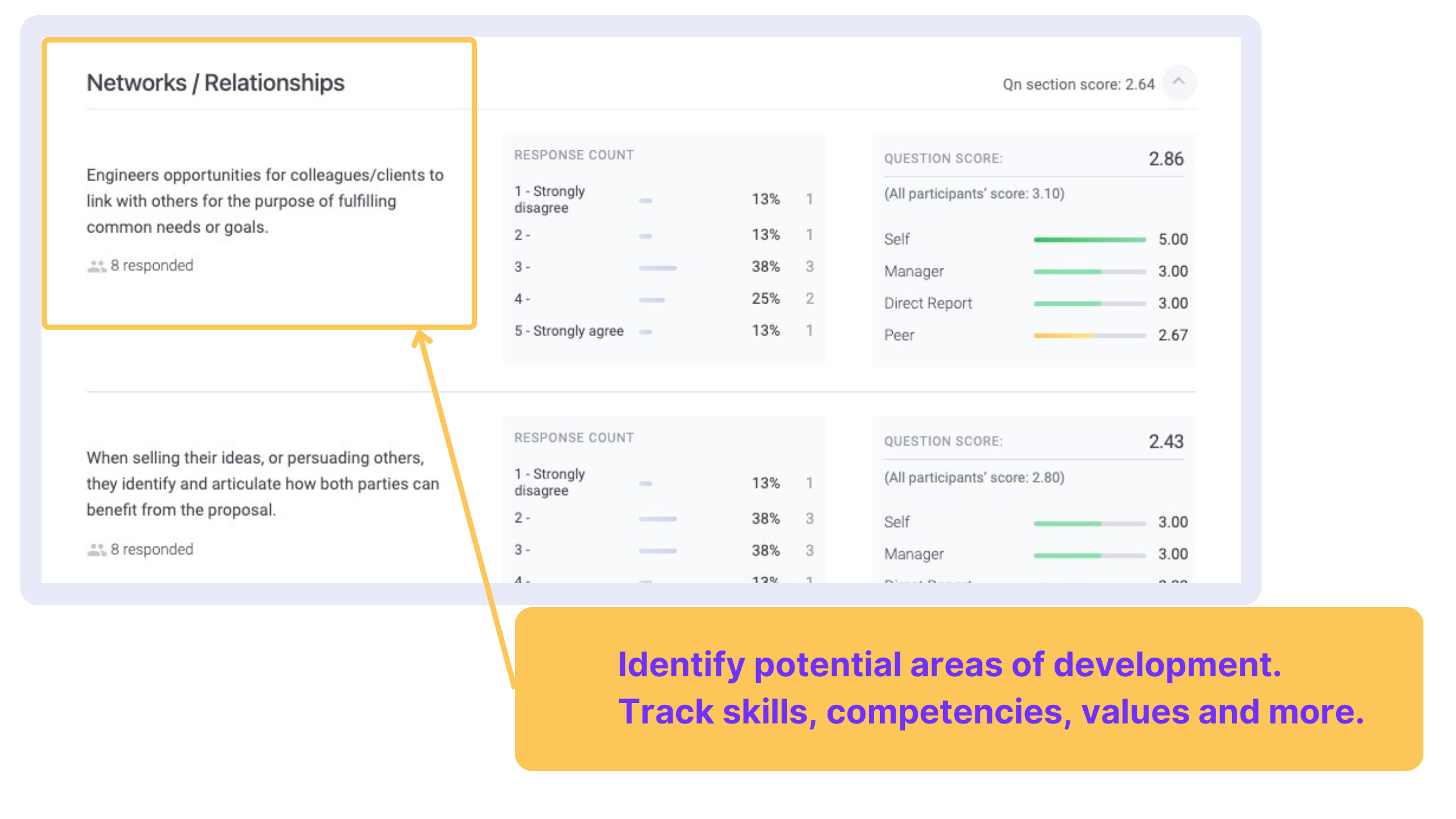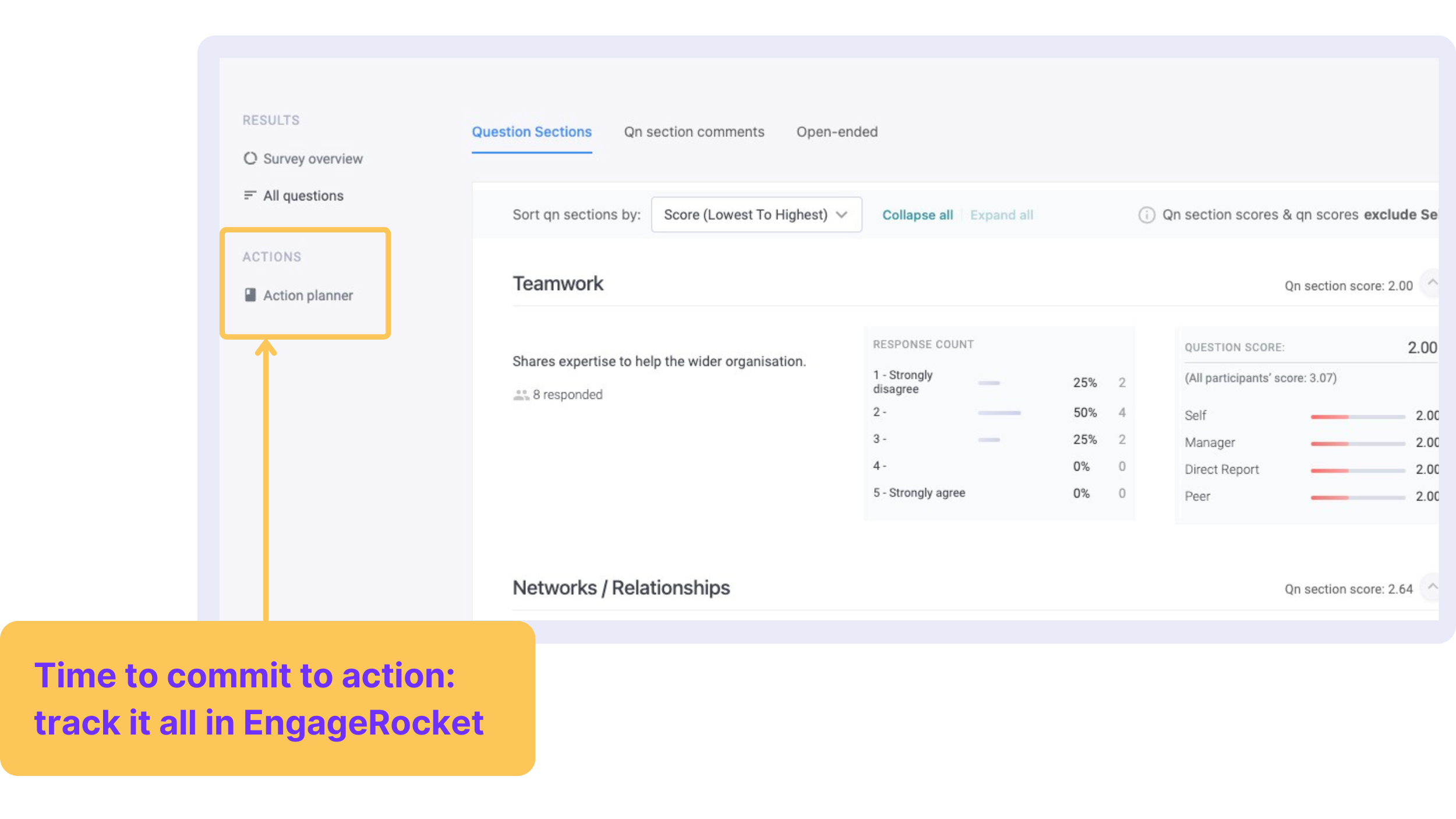We have all seen negative things about performance reviews.
- Only one in five employees agree that their company’s performance practices motivate them.
- Most CEOs don’t find that the appraisal process helps to identify top performers.
- Over 50% of employees think their managers don’t get the performance review right.
Reasons? One-sided conversations, mixed messages, wordy documents, and a lack of performance management framework.
However, the right approach makes performance reviews an excellent opportunity to help your employees reach new heights.
Let’s begin with understanding the performance management framework, followed by the steps to create one. We will also discuss some secret tips to conduct comprehensive reviews successfully.
Table of contents
Performance management framework: An overview
How to create a performance management framework
Tips to make your performance management framework a success
Performance management framework: An overview
A performance management framework lays out a process for performance reviews to manage & improve performance at individual, team, and business levels. The principles and guidelines in a performance management framework guide everyone to be on the same page.
The right performance management framework gives managers and employees the rails to communicate. It also provides a mechanism for early identification and addressing performance appraisal challenges.
A performance management framework in HRM is also closely tied to your financial success. If your system lacks efficiency, you could let time, money, and talent slip through the cracks. Both hard costs (rehiring) and soft costs (client relationships) can hurt your bottom line in the long run.
Although performance reviews may be at set intervals, performance management is a fluid, flexible, always-evolving framework.
How to create a performance management framework?
Having an employee-friendly performance management process can make or break the development of your employees. It also strengthens the relationship between managers and their employees. You might come across many performance management framework examples, but to get the most out of your framework, you must ensure it includes the following steps to address the unique needs of your business:
1. Align objectives with organizational strategy
The foundation of an effective performance management strategy requires you to lay out what you wish to achieve from it before it begins. Identify your goals or mission and align them with your overall organizational strategy. Here are some examples of the performance management goals:
- Improve communication skills
- Motivate employees
- Enhance problem-solving skills
- Develop technical skills
- Boost productivity
- Cultivate leadership skills
- Enhance customer service skills
2. Identify criteria and KPIs to track
Correct employee performance metrics or KPIs can improve your performance management framework. After all, how will you achieve better employee performance if you aren't aware of what KPIs are being measured? Here are some examples of employee KPIs that can help you determine if you're on track.
- Revenue per employee
- Work efficiency
- Overtime
- Work quality
- Completion rate
- Utilization rate
- Absenteeism
💡 Expert Tip:
If you don’t have a performance management framework template or software, it’s smart to consider one.

EngageRocket’s GROW - 360 feedback and peer review tool dashboard
3. Choose evaluation methods
A well-defined performance management strategy is like a well-oiled machine that operates efficiently. Just as a machine is made up of various parts, a performance framework is made up of different evaluation methods. You can choose a combination of these evaluation methods to create a balanced framework.
- OKRs - Objectives and key results are similar to KPIs when measuring goals. But they can encompass any KPIs and provide measurable steps towards challenging goals.
- Balanced scorecard - Although the balanced scorecard approach is labor-intensive, it provides a comprehensive view of a company's performance. It considers individual employee performance, financial performance, customer satisfaction, internal processes, infrastructure, and human capital.
- Annual performance reviews - These performance reviews happen once a year. Combine these with other evaluation methods to conduct regular check-ins and form a continuous performance framework.
- Management by Objective (MBO) - This collaborative method sets measurable goals for an organization, departments, and individual members. It fosters productivity by providing specific, detailed targets.
- 360 reviews - 360 reviews are a framework that allows employees to provide feedback from all company levels. They highlight the impact each employee has. This method is suitable for project-based teams and cross-functional roles. Software like GROW from EngageRocket can streamline 360 reviews for your organization.
- Custom performance management - This method involves tailoring your evaluation criteria per your needs, incorporating elements from different frameworks, such as 360-degree reviews, balanced scorecards, and annual reviews. Adjust the process for different teams and focus on various aspects throughout the review cycle.
4. Weave performance management into the business planning cycle
Performance management should be an integral part of business planning. AI-powered solutions like PerformAI help organizations create a culture of continuous feedback mechanisms. Instead of waiting for annual reviews or other surveys, the solution provides feedback in the moments that matter. PerformAI integrates seamlessly with your Microsoft Teams app and helps managers nurture high-performing teams by providing input at the right time.

| Improve performance continuously | Make performance appraisal easy |
|
✔️ Smart prompts to encourage feedback culture ✔️ Benchmark high-performing teams for smart coaching ✔️ Integration with learning modules ✔️ Integration with psychometric profiles ✔️ Customizable templates, tone, and feedback frameworks (e.g. Radical Candor, Situation/Behaviour/Impact feedback model, etc) |
✔️ Deeply integrated into the flow of work |
"From Silicon Valley to New York, and in offices across the world, firms are replacing annual reviews with frequent, informal check-ins between managers and employees."
5. Monitor and review
You can have the best performance management strategy, but it won't be effective if you don't review it and make adjustments as necessary. Monitoring your framework helps you become more conscious of the factors that affect your employees. Reviewing performance data and sharing it with the team members enables you to maintain operational efficiency and adapt promptly to evolving needs.
Tips to make your performance management framework a success
Writing an effective review isn’t easy. And managers often don’t receive enough guidance. Here, we’ll explore best practices for writing and conducting comprehensive reviews and share how performance management software can help.
1. Get buy-in from everyone
We have come a long way from the “hierarchy of power.” The corporate world has shifted towards fostering a sense of unity and shared responsibility. From managers to employees, keep everyone involved when creating a performance management framework. This ensures everyone has a greater understanding of control over the process, and their level of engagement increases.
2. Use a continuous performance management platform
"An investment of 1.8 million hours across the firm that didn't fit our business needs anymore," was how one Deloitte manager described the review process in an article. You would not want to be in this situation.
A continuous performance management software like EngageRocket’s PerformAI & GROW can help you collect and analyze employee performance data in real-time for a connected and engaged workforce:
- Flexible setup: Customize questions, rater groups, selection methods, communication, and reminders.
- Research-backed question banks.
- Powerful analytics capabilities.
- Action planner: Set goals, targets, tasks, and reminders to foster personal mastery.
- AI-assisted feedback: Generate genuine, human-like feedback in less than a minute.
- Empower managers: See all feedback for team members and stay on top of your or your team members’ performance by analyzing the feedback they have received over time.

EngageRocket’s GROW - 360 feedback and peer review deep dive allows you to track skills, competencies and more
3. Aim for more frequent touchpoints
Simply sending out annual reviews may not be sufficient to assess employee performance accurately. This is because a lot can happen within 12 months. While annual reviews are good, organizations should supplement them with more frequent surveys and informal check-ins to better comprehend the employees' pulse.
4. Tailor performance management questions
With many performance management framework examples and free templates available online, selecting the correct set of questions for your organization can often be confusing. Your chosen performance management platform should allow you to tailor and customize performance management questions to make them unique to your organization.
Conclusion
The aim of the performance management framework for employees is two-fold:
- An accurate and actionable evaluation of employee performance.
- Development of that person’s skills in line with job tasks.
A structured performance management framework provides a systematic approach to assess employee performance based on predefined criteria and objectives. Performance management software makes this even easier and more streamlined.
EngageRocket’s GROW allows for real-time 360 evaluation of employees. It offers actionable insights to managers to develop their workforce.

Book a demo with us today to learn how EngageRocket can help you improve employee performance, boost productivity, and keep the entire organization aligned in its mission.
FAQs
1. What are the 5 stages of performance management?
Performance management can be divided into five key stages:
- Planning
- Monitoring
- Developing and reviewing
- Rating
- Rewards
2. What are the 4 areas of performance management?
The four primary areas of performance management are:
- Goal setting - establishing clear and achievable objectives.
- Ongoing performance monitoring - continuously tracking and evaluating employee performance against set goals.
- Feedback provision - leverage different feedback methods to provide constructive feedback to employees on their performance, strengths, improvement areas, and development opportunities.
- Formal evaluation - conducting formal performance evaluations to assess employee performance over a specific period.
3. What is the performance evaluation framework?
A performance evaluation framework is a set of principles that serve as a foundation for employees to achieve high levels of success. It acts as a bridge that connects individual goals with organizational objectives.


.png?width=770&height=289&name=CTA-Banner-Blog%20(1201%20%C3%97%20450px).png)

 .
. 